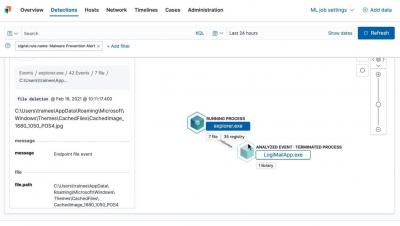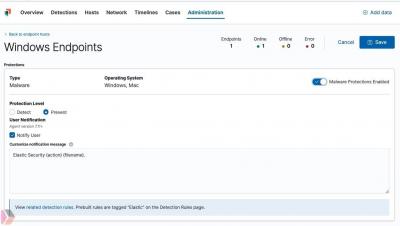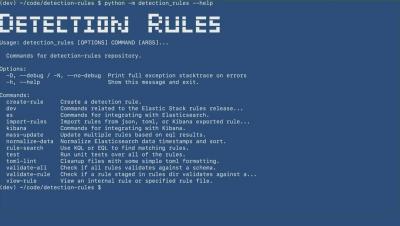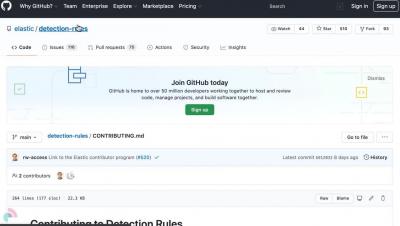Security | Threat Detection | Cyberattacks | DevSecOps | Compliance
Elastic
How to configure your Endpoint Integration policy in Elastic Security
Validating Elastic Common Schema (ECS) fields using Elastic Security detection rules
The Elastic Common Schema (ECS) provides an open, consistent model for structuring your data in the Elastic Stack. By normalizing data to a single common model, you can uniformly examine your data using interactive search, visualizations, and automated analysis. Elastic provides hundreds of integrations that are ECS-compliant out of the box, but ECS also allows you to normalize custom data sources. Normalizing a custom source can be an iterative and sometimes time-intensive process.
Detecting threats in AWS Cloudtrail logs using machine learning
Cloud API logs are a significant blind spot for many organizations and often factor into large-scale, publicly announced data breaches. They pose several challenges to security teams: For all of these reasons, cloud API logs are resistant to conventional threat detection and hunting techniques.
Collecting all the data your SIEM needs to keep up
When it comes to your SIEM, your data is only as useful as your ability to ingest and analyze it. To solve complex security problems, your team ideally needs the ability to comprehensively monitor events within your environment with contextual insights from high-volume data sources.
Top 5 SIEM trends of 2021 and how Elastic Security solves them
Security information and event management (SIEM) systems are centralized logging platforms that enable security teams to analyze event data in real time for early detection of targeted cyber attacks and data breaches. A SIEM is used as a tool to collect, store, investigate, and report on log data for threat detection, incident response, forensics, and regulatory compliance.
How to build a malware analysis sandbox with Elastic Security
As a security analyst on Elastic’s InfoSec team, a common scenario we see is users coming to our team and asking: “Is this file safe to open?” Or one user reports a phishing email with an attachment that they didn’t open, but we see from the logs that 10 other users also received that email but didn’t report it and no alerts went off on their systems.
How to export and import Timelines and templates from Elastic Security
When performing critical security investigations and threat hunts using Elastic Security, the Timeline feature is always by your side as a workspace for investigations and threat hunting. Drilling down into an event is as simple as dragging and dropping to create the query you need to investigate an alert or event.









